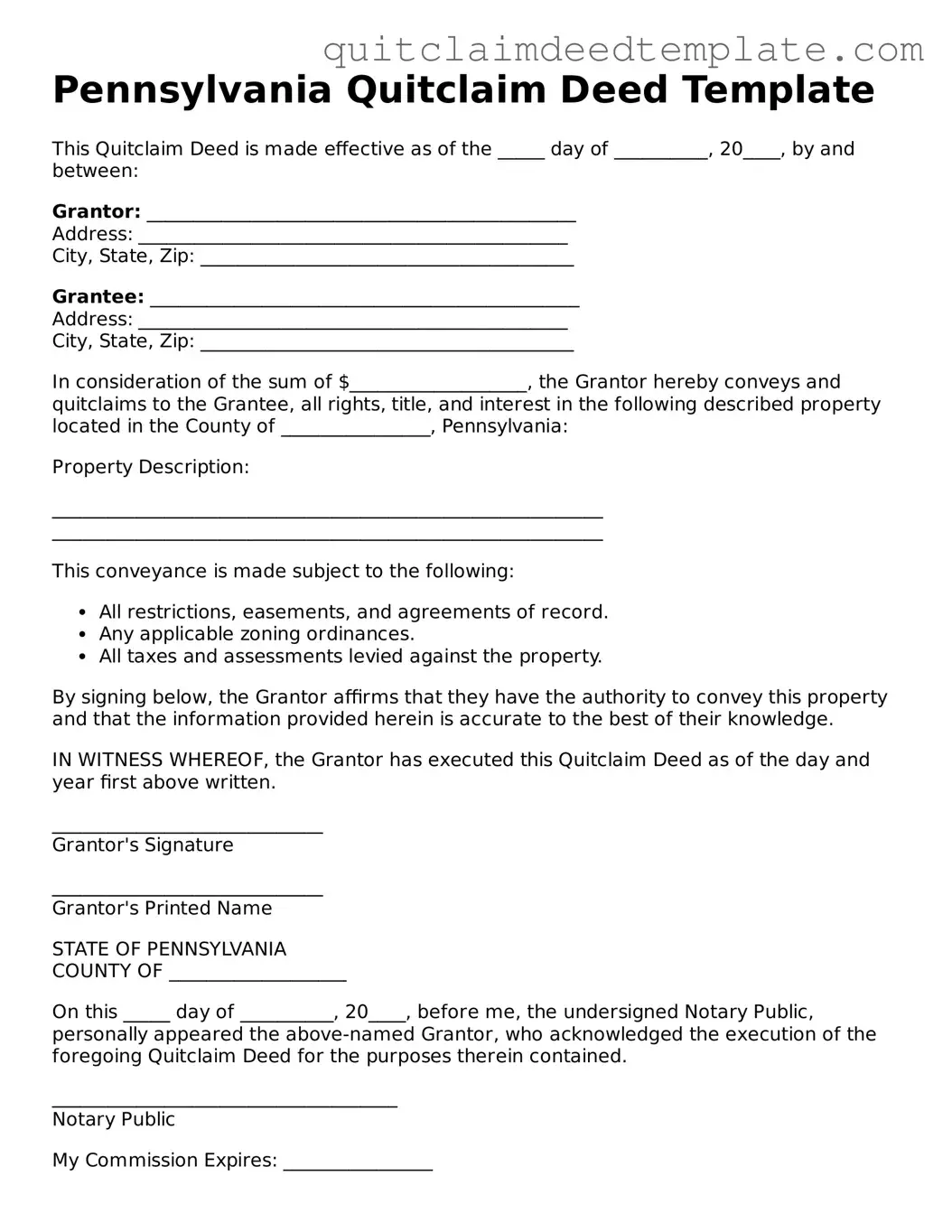Documents used along the form
When transferring property ownership in Pennsylvania, the Quitclaim Deed form is commonly used. However, several other forms and documents may accompany it to ensure a smooth transaction. Below is a list of these essential documents.
- Property Title Search: This document provides information about the current ownership of the property and any liens or encumbrances that may exist.
- Affidavit of Residence: This form verifies the residency of the grantor, which can be important for tax purposes.
- Notice of Settlement: This document informs all parties involved about the date and time of the property settlement.
- Transfer Tax Form: This form is required to calculate and report any transfer taxes due at the time of the property transfer.
- Seller's Disclosure Statement: This statement outlines any known issues with the property that the seller must disclose to the buyer.
- Title Insurance Policy: This policy protects the buyer from any future claims against the property’s title.
- Settlement Statement (HUD-1): This document details all costs associated with the transaction, including fees and expenses for both parties.
- Power of Attorney: If the grantor cannot be present, this document allows another person to sign on their behalf.
- Deed of Trust: This document secures a loan by placing a lien on the property, often used in conjunction with a mortgage.
These documents play a crucial role in the property transfer process. Ensuring that all necessary paperwork is completed can help prevent future disputes and complications.
